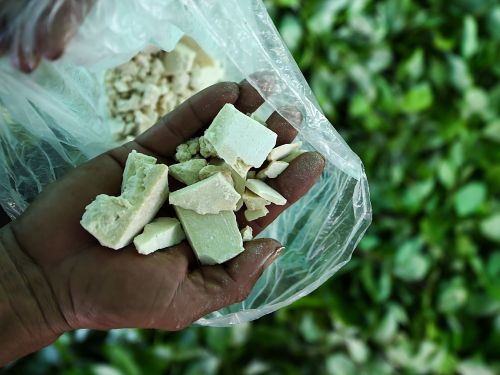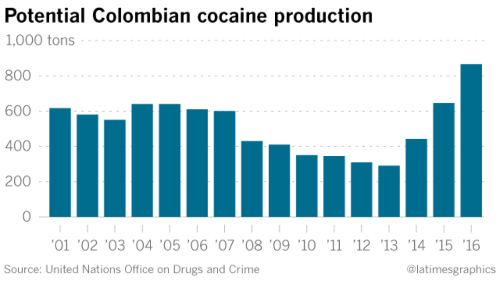
: The Conundrum of Colombia’s Cocaine Trade: Farmers’ Dilemma
In recent years, Colombia has been making strides in trying to root out the cocaine trade that has plagued the country for decades. However, a major obstacle in their efforts lies in the resistance from Colombian coca farmers, who see the illicit crop as their only source of income and livelihood.
The farmers, facing a threat to their very way of life, are pushing back against U.S.-backed efforts to eradicate cocaine production. For many of them, coca cultivation serves as an “insurance policy” – providing financial security in a country where opportunities for legal employment are limited.
The harsh reality is that many Colombian farmers have few alternatives to turn to. The lack of government support and infrastructure in rural areas leaves them with little choice but to continue growing coca plants, despite the risks and consequences.
It’s a complex issue that highlights the deep-rooted challenges faced by those caught in the middle of the drug trade. For these farmers, it’s not as simple as just quitting the cocaine business. They need viable alternatives and support from the government to transition to legal crops.
Buy Colombia cocaine online near me
In the meantime, the demand for cocaine continues to fuel the illegal trade, with buyers searching for ways to buy Colombian cocaine online. It’s a vicious cycle that perpetuates the problem and leaves the farmers stuck in a dangerous and unsustainable situation.
As Colombia grapples with finding a solution to the cocaine trade, it’s crucial to consider the plight of the farmers who rely on it for their survival. Without addressing their needs and providing them with viable alternatives, eradicating the cocaine trade will remain a difficult and complex task.
In the end, it’s a delicate balance between rooting out the illegal drug trade and supporting the farmers who depend on it. Only through a comprehensive and holistic approach can Colombia truly make progress in tackling this longstanding issue.
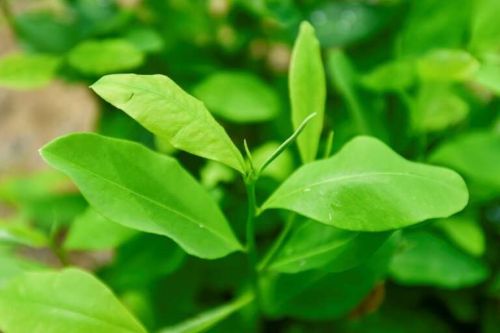
Resisting the War on Coca: Colombian Farmers Fight for Their Livelihood
In the lush landscapes of Colombia, coca farmers are facing a looming threat to their way of life as U.S.-backed efforts to eradicate their crops pick up steam. These farmers, often marginalized and overlooked, are now taking a stand against powerful forces intent on wiping out their primary source of income.
For decades, Colombia has been a major producer of coca, the plant used to make cocaine. The drug trade has wreaked havoc on the country, leading to violence, corruption, and unrest. In response, the U.S. has poured billions of dollars into anti-drug efforts, including aerial fumigation campaigns aimed at destroying coca crops.
But for the farmers who depend on coca for their livelihood, these efforts are seen as a direct attack on their way of life. Many of these farmers have few other options for making a living, and the eradication of their crops would leave them destitute.
where to buy Colombia’s Cocaine
In the face of this threat, Colombian coca farmers are organizing and resisting. They are demanding alternative sources of income, such as legal crop substitution programs, to allow them to transition away from coca farming. They are also calling for an end to the aerial fumigation campaigns, which have been linked to health problems and environmental damage.
These farmers are not just fighting for their own livelihoods, but for their communities and their way of life. They are pushing back against a system that has marginalized and exploited them for too long.
As the U.S. continues to push for the eradication of coca crops in Colombia, it is crucial to listen to the voices of the farmers who are most affected. We must support their efforts to find sustainable and equitable solutions that allow them to thrive without resorting to illicit activities.
In the end, the war on coca is not just a battle against drugs – it is a struggle for the rights and dignity of the Colombian people. It is time to stand with these farmers in their fight for a better future.
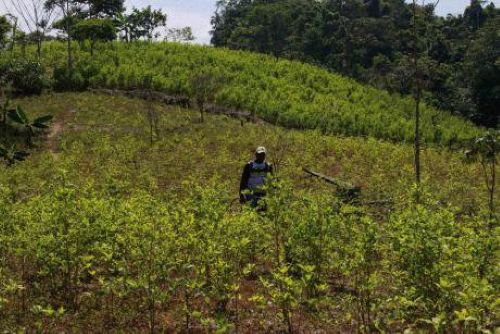
The Surprising Rise in Colombian Cocaine Production Post-Peace Agreement
In recent years, Colombia, once considered the epicenter of the global cocaine trade, has seen a significant increase in cocaine production despite the signing of a historic peace agreement in 2016. But why has this unexpected trend emerged, and what are the implications for both Colombia and the international community?
Since the peace agreement between the Colombian government and the Revolutionary Armed Forces of Colombia (FARC) was signed, many had hoped for a decrease in illegal drug production in the country. However, the reality has been quite the opposite, with Colombian cocaine production hitting record highs in recent years.
One of the main reasons for this increase is the fact that the peace agreement led to the demobilization of many FARC fighters, who were heavily involved in the illegal drug trade. With the FARC out of the picture, other criminal groups and armed organizations have taken advantage of the power vacuum to seize control of drug trafficking routes and production facilities.
These new players in the drug trade are often more ruthless and aggressive than the FARC, leading to an escalation in violence and instability in certain regions of Colombia. This has created a vicious cycle where increased drug production fuels violence, which in turn allows for further expansion of drug trafficking networks.
Additionally
the peace agreement has also led to a decrease in government eradication efforts, as authorities have shifted their focus towards implementing the terms of the agreement and reintegrating former combatants into society. This lack of enforcement has created a favorable environment for drug traffickers to operate with impunity.
As a result of these factors, Colombian cocaine production has surged, leading to an abundance of cheap and easily accessible cocaine in the market. This has made it tempting for individuals to buy Colombian cocaine online, with searches for phrases like “buy cheap Colombian cocaine online near me” and “Colombian cocaine for sale online” becoming increasingly common.
However, it is important to remember that the production and distribution of cocaine are illegal activities that have devastating consequences for individuals, families, and communities. The rise in Colombian cocaine production is not something to be celebrated or exploited for personal gain.
In conclusion, the increase in Colombian cocaine production since the peace agreement is a complex and concerning development that highlights the ongoing challenges faced by Colombia in combating illegal drug trafficking. It is crucial for the government and international community to work together to address the root causes of this issue and prevent further escalation of the drug trade in the country.
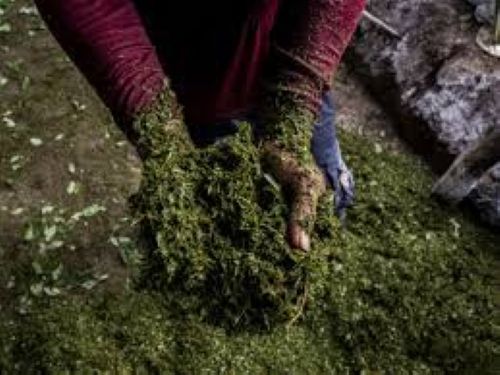
Record Cocaine Production in Colombia: A Challenge to U.S. Policy
In recent years, Colombia has seen a drastic increase in cocaine production, reaching levels not seen since the Clinton era. According to a report by Bloomberg, Colombia’s cocaine output has soared, defying U.S. efforts to curb drug trafficking in the region.
This surge in production has raised concerns about the effectiveness of U.S. drug policies in the region. Despite billions of dollars spent on counter-narcotics efforts, Colombia seems to be back at square one, with record levels of cocaine being produced and trafficked.
The reasons behind this increase in production are complex and multifaceted. Some experts point to the peace deal with the FARC rebels, which has allowed former coca-growing areas to resume cultivation. Others believe that the demand for cocaine in the U.S. and Europe has fueled the boom in production.
Regardless of the reasons, the fact remains that Colombia is once again a major player in the global drug trade. This presents a challenge to U.S. policymakers, who have long sought to reduce the flow of cocaine into the country.
In light of this news, some may be tempted to look for ways to buy cheap Colombian cocaine online. However, it is important to remember the devastating impact that drug trafficking has on communities in Colombia and around the world. The best way to combat this issue is through international cooperation and sustainable development efforts in coca-growing regions.
As the situation in Colombia continues to evolve, it is clear that a new approach is needed to address the root causes of drug production and trafficking. Only through a comprehensive and collaborative effort can we hope to stem the tide of cocaine coming out of Colombia
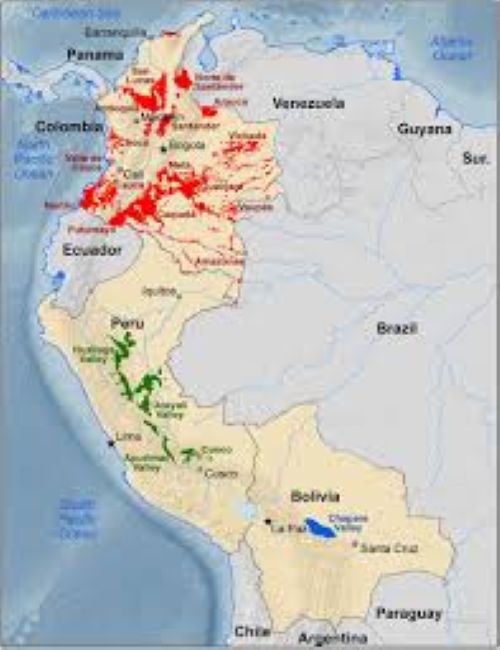
Exploring South America’s Coca-Growing Regions: A Map Tour
South America is renowned for its lush landscapes and diverse ecosystems, but it is also home to some of the world’s most significant coca-growing regions. From the Andean mountains to the Amazon rainforest, these regions play a pivotal role in the production of coca leaves, which are used to make cocaine. In this blog post, we unveil a detailed map outlining each of the known South American coca-growing regions, shedding light on the geographical distribution of this controversial crop.
Overview of South American Coca-Growing Regions:
- The Andean Mountains: Stretching across Colombia, Peru, and Bolivia, the Andean mountains are a hotbed for coca cultivation. The high altitudes and fertile soils of this region provide the ideal conditions for coca plants to thrive. In Colombia, the provinces of Norte de Santander, Putumayo, and Nariño are known for their extensive coca fields, while Peru’s Huánuco region is one of the largest coca-producing areas in the country. In Bolivia, the Yungas valleys are famous for their traditional coca farming practices.
- The Amazon Basin: As one of the most biodiverse regions on the planet, the Amazon rainforest harbors a significant number of coca plantations. In countries like Brazil and Ecuador, coca growers take advantage of the dense vegetation and remote terrain to cultivate their crops away from prying eyes. The Upper Amazon region, which spans parts of Colombia, Peru, and Brazil, is particularly notorious for its large-scale coca production.
- The Chaco Plains: Located in Paraguay and Argentina, the Chaco plains have also become a hotspot for coca farming in recent years. The tropical climate and vast expanses of land make this region an attractive location for illicit coca cultivation. While not as well-known as the Andean mountains or the Amazon basin, the Chaco plains play a significant role in the global cocaine trade.
Conclusion:
The map we have outlined provides a visual representation of the known South American coca-growing regions, offering insights into the geographical distribution of this controversial crop. By understanding the vast expanse of land where coca is cultivated, we can better appreciate the scale of the challenges that law enforcement agencies and governments face in tackling the illegal drug trade. As we continue to explore the intricate relationship between geography and illicit activities, it becomes clear that the fight against coca cultivation is far from over.



